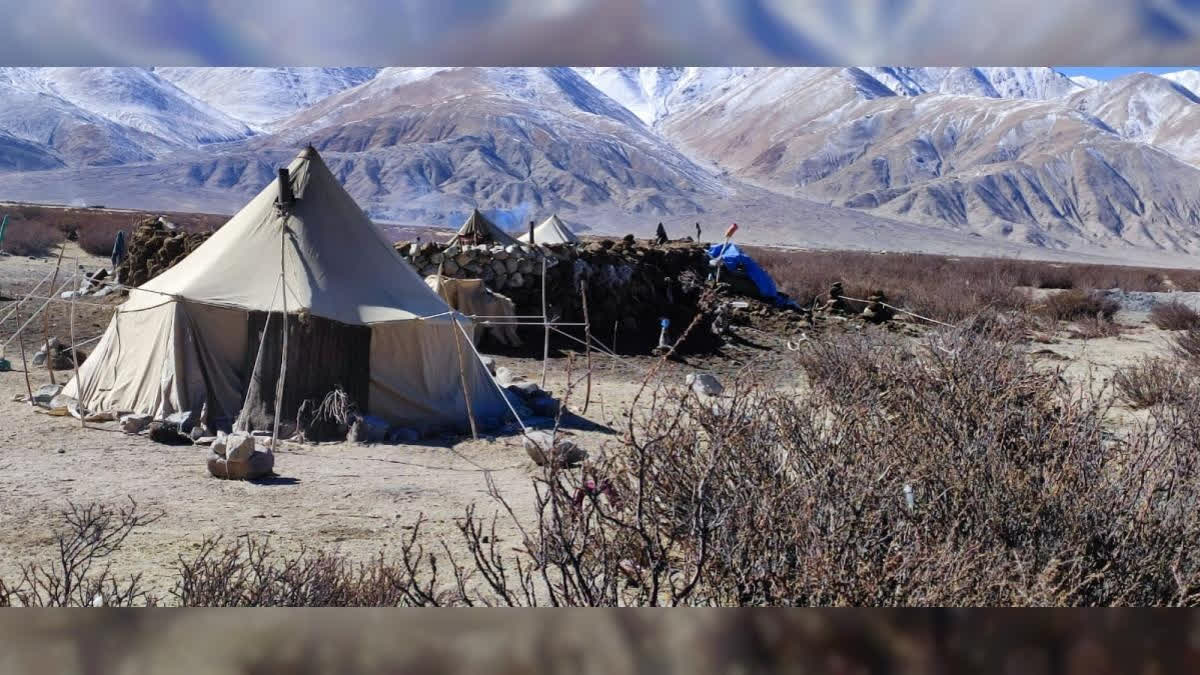BY Rinchen Angmo Chumikchan
Leh:The winds of winter have brought with them a challenging reality for the pastoral communities of the Changthang region in Ladakh. Known for its high-altitude grazing pastures and livestock-dependent economy, Changthang fears a grass and fodder shortage this year—a crisis that threatens the livelihoods of its nomadic population.
Livestock is the backbone of this community, with over 3.33 lakh animals, including sheep and goats, in the Changthang belt, out of a total of four lakh livestock in the Leh district. However, insufficient rainfall during the summer months has left pastures barren, raising fears of high mortality rates during the peak winter months.
To combat this, the Ladakh Autonomous Hill Development Council (LAHDC), Leh, has been working to secure feed and fodder under its subsidy scheme. Every year, LAHDC Leh gets feed and fodder from outside Ladakh for the livestock. Combining both Sheep and Animal husbandry, they get feed and fodder worth Rs 5.50 lakh from outside Ladakh.
Tashi Namgyal Yakzee, Executive Councillor for Sheep and Animal Husbandry, LAHDC, Leh, said, "This year, the Sheep Department received 7,000 quintals of feed—an increase of 1,000 quintals compared to last year."
According to Yakzee, 80 per cent of this is allocated to Changthang, where most of the livestock is concentrated.
"This year, due to less rainfall during the summer, there has been a shortage of grass in the pastureland and grazing areas. We usually assess the availability of grass in the September-October period to determine whether it is sufficient. Rainfall in May, June, and July is crucial; if it is inadequate, we must prepare for shortages," Yakzee said.
Yakzee said that he recently met with the Lt. Governor Ladakh to submit a proposal for supplementary feed, fodder, and barley.
"He has assured us of arranging a budget for this purpose. We are doing our best to mitigate this risk. Efforts are underway to procure barley, which is highly nutritious, and we have requested financial assistance from the UT administration to support this initiative," Yakzee said.
According to Yakzee, additionally, the sheep department manages several farms, including Stakna and Upshi, where they have collected approximately 1,500 quintals of fodder.
"This reserve is utilised during crises, such as heavy snowfall, to prevent livestock mortality. The fodder is deposited in various fodder banks in the Changthang area, which have capacities ranging from 200 to 1,000 quintals, depending on the livestock population in those regions," said Yakzee.
The council has expedited efforts to distribute emergency feed and fodder ahead of Ladakhi Losar (New Year), typically distributed in January, to ensure livestock are better equipped to face the harsh winters.
Yakzee also highlighted the importance of stocking resources early. "While the Animal Husbandry Department has completed its stocking, the Sheep Husbandry Department is still procuring essential supplies. Typically, all stockings should be completed by November," he added.
Government Support and Innovation
In addition to emergency feed, the government has introduced several measures to reduce livestock mortality. One key initiative is the development of portable kid pens, designed to protect young animals during the kidding season, from December to March.
During this time, heavy snowfall can weaken the mother animals, resulting in insufficient milk supply for the kids, which can lead to high mortality rates. However, with adequate feed and grass, the kids remain healthy, significantly increasing the chances of livestock growth.
